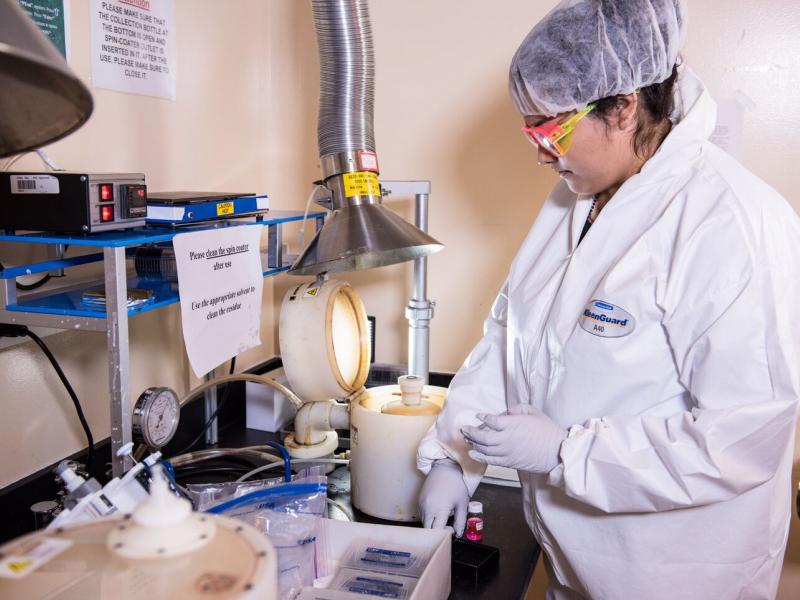
WDTS Internships
WDTS Internships
Discover a future in science
Discover a future in science
During her Science Undergraduate Laboratory Internship, Molly Vitale-Sullivan worked with mentor Amanda Lines, chemist, and Adan Medina, chemical engineer, on two projects at Pacific Northwest National Laboratory: the characterization of iodine species in molten hydroxide salts for reactor off-gas processing and characterization of chromium in molten chloride salts for corrosion product monitoring.
(Photo by Andrea Starr | Pacific Northwest National Laboratory)
Explore DOE internships: SULI, CCI, and more
Are you a college student interested in a career in science, technology, engineering, or mathematics (STEM)? Gain technical and research experiences through a paid internship at Pacific Northwest National Laboratory (PNNL), supported by the U.S. Department of Energy (DOE) Office of Science's Workforce Development for Teachers and Scientists (WDTS) program.
Through WDTS undergraduate internships, students at two- or four-year colleges spend 10 to 16 weeks learning and conducting research alongside PNNL’s scientists and engineers. The programs encourage college students to enter careers relevant to the DOE mission. Opportunities include:
- Community College Internships (CCI): 10-week summer, fall, and winter/spring internships for students currently enrolled full time at a community college or accredited two-year college and who have completed at least one semester at the time of applying.
- Science Undergraduate Laboratory Internships (SULI): 10-week summer or 16-week fall and winter/spring research internships for college sophomores, juniors, seniors, or recent graduates majoring in STEM fields or science policy. Applicants must be currently enrolled as a full-time undergraduate student at an accredited institution (including accredited community colleges).
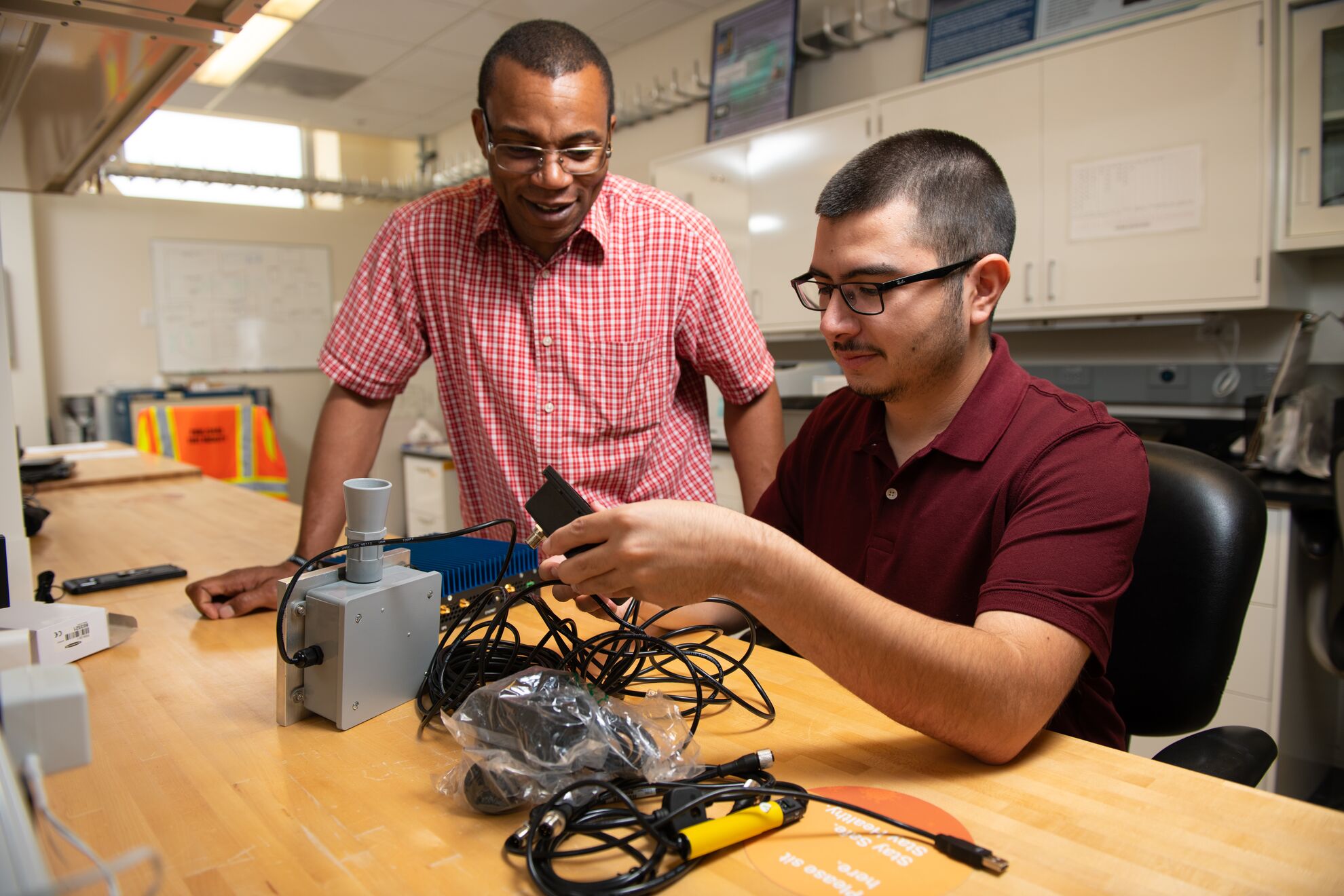
Hands-on science
From conducting experiments to presenting findings, interns participate in real-world research and technical projects while being mentored by PNNL’s accomplished scientists and engineers. You might help develop a better battery for electric vehicles, explore artificial intelligence technologies, study cancer biology, investigate quantum computing, or contribute to scientific discovery in another exciting way.
Whether you’re interested in chemistry, biology, physics, or computer and data science—or you want to tackle challenges in clean energy, Earth systems, or national security—an internship at PNNL provides great opportunities for hands-on training using world-class instrumentation and facilities.
Graduate students and beyond
WDTS internships support the development of future scientists and engineers at all academic levels. Additional programs include:
- Office of Science Graduate Student Research program: Opportunities for outstanding graduate students who are pursuing a PhD to conduct thesis research at PNNL.
- Visiting Faculty Program: Summer scientific research collaborations for college and university faculty.
Apply for a WDTS internship
There are three internship terms per year with start dates in the fall, spring, and summer. The program includes salary and allowances for travel and housing. Students typically work 40 hours per week over 10 to 16 weeks.
Interns at PNNL come from all types of backgrounds and colleges across the United States. For more information about eligibility and applying, visit the Community College Internships page or the Science Undergraduate Laboratory Internships page.

Science Undergraduate Laboratory Internship student Isis Carrillo, who attended the University of Washington, worked to improve a surface profiling technique called LESA-MS.
(Photo by Andrea Starr | Pacific Northwest National Laboratory)
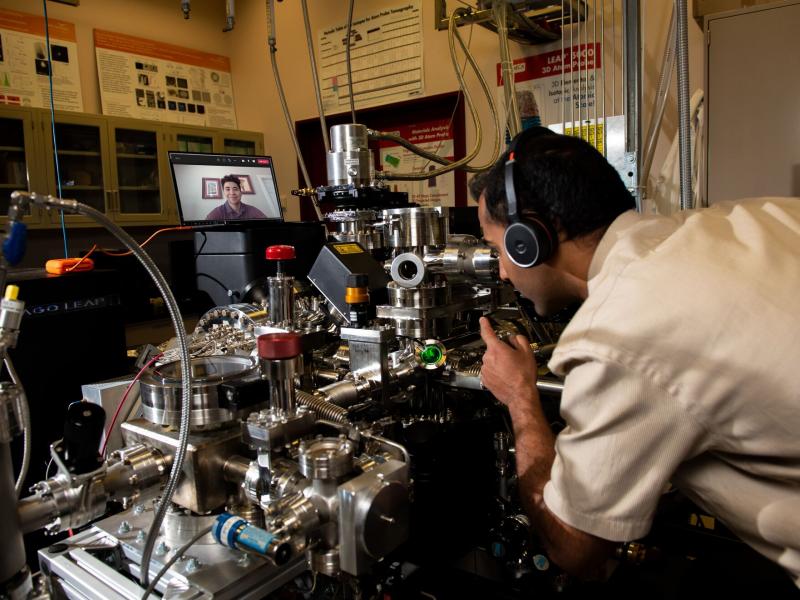
Mentor Bharat Gwalani and student Angelo Cruz-Diaz, who analyzes the data from his home in Texas, use a focused ion beam microscope in the Environmental Molecular Sciences Laboratory to fabricate sharp needles that are then used for atom probe tomography for nanoscopic compositional characterization of shear processed materials.
(Photo by Andrea Starr | Pacific Northwest National Laboratory)
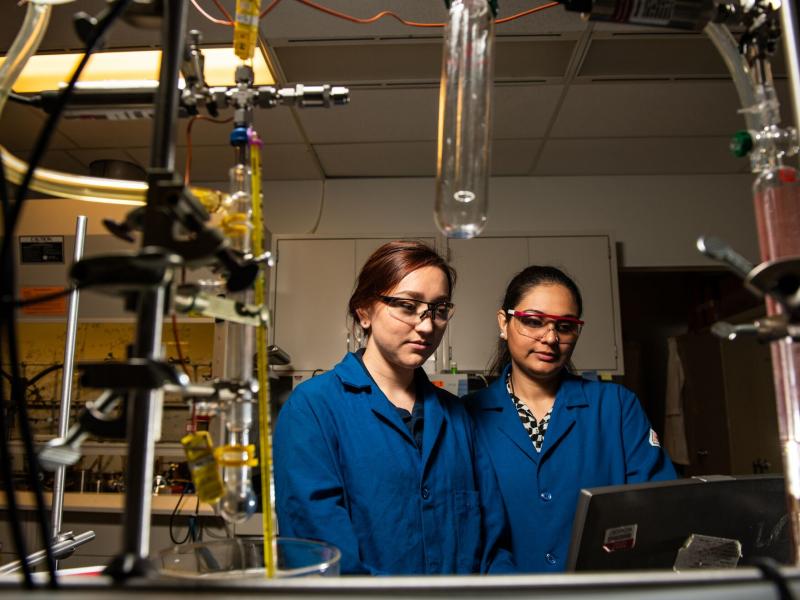
Tacoma Community College student Kayla Shaffron conducted carbon research with her mentor, Deepika Malhotra, during her Community College Internship at Pacific Northwest National Laboratory.
(Photo by Andrea Starr | Pacific Northwest National Laboratory)
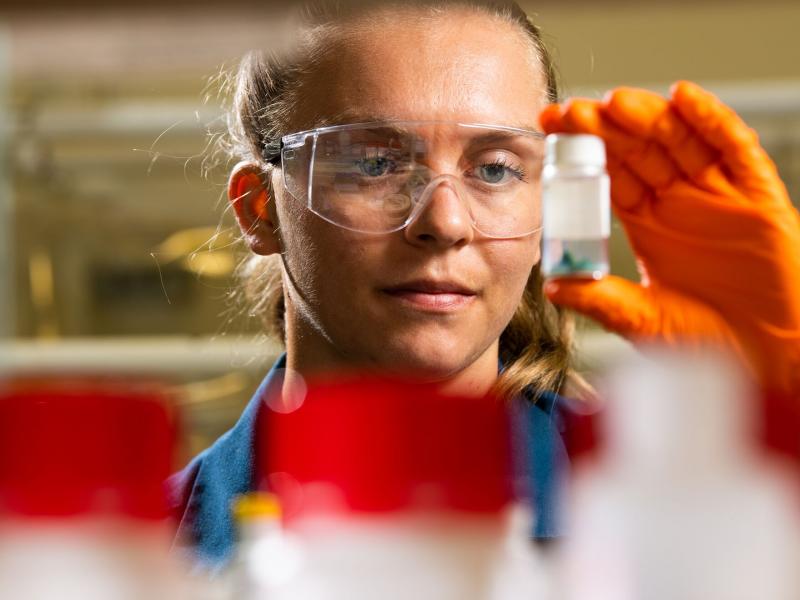
Molly Vitale-Sullivan, a mathematics-physics major from the College of Idaho, worked on two research projects using optical spectroscopy (ultraviolet-visible and Raman) and electrochemistry techniques to collect chemical fingerprints of iodine and chromium species and track changes in different oxidation states. This chemical information will be used for online, real-time monitoring of Molten Salt Reactors. Vitale-Sullivan is part of the Science Undergraduate Laboratory Internship program.
(Photo by Andrea Starr | Pacific Northwest National Laboratory)
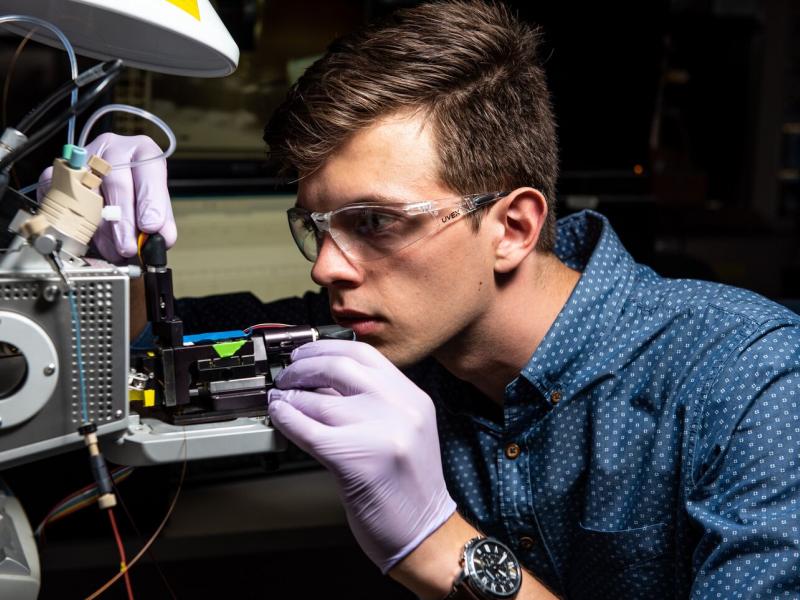
During his Science Undergraduate Laboratory Internship at Pacific Northwest National Laboratory, Michael Hewitt and his mentor, chemist Grant Johnson, worked with coinage-metal clusters, nanomaterials, and surfaces. One of his projects involved using electrospray ionization mass spectrometry (ESI-MS) to identify and characterize gold clusters and the intermediates involved in their formation. Hewitt double majored in chemistry and neuroscience at Grinnell College in Grinnell, Iowa.
(Photo by Andrea Starr | Pacific Northwest National Laboratory)
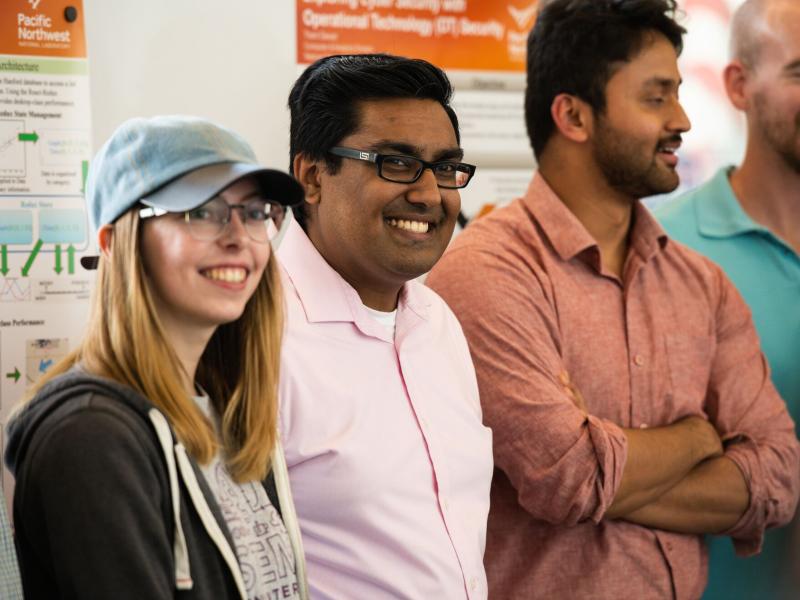
Summer interns showcase the results of their research experience at an end-of-summer symposium. Atri Maharaj (middle), a graduate of Stony Brook University in New York, presented on his organic chemistry research during his Science Undergraduate Research Internship at Pacific Northwest National Laboratory.
(Photo by Andrea Starr | Pacific Northwest National Laboratory)
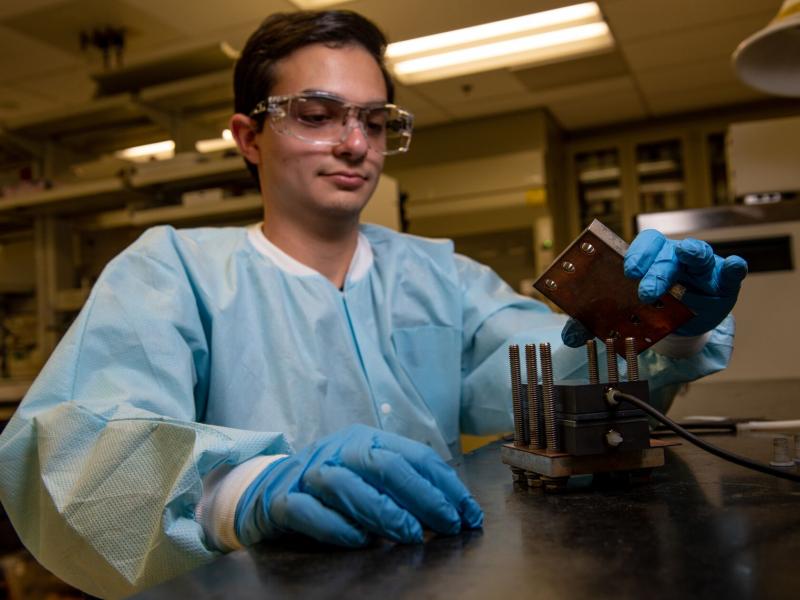
Jonathan Sepulveda, a materials science major at Stanford University, worked on battery research during his Science Undergraduate Laboratory Internship at Pacific Northwest National Laboratory.
(Photo by Andrea Starr | Pacific Northwest National Laboratory)
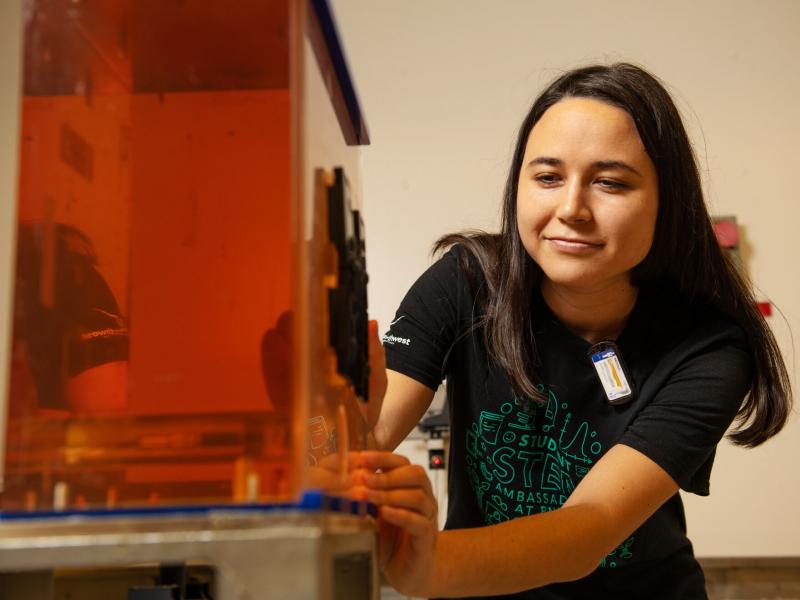
Jennifer Meza completed a Community College Internship at Pacific Northwest National Laboratory while earning an A.A.S. at Columbia Basin College. She is training with the Radiation Measurements and Irradiations team to become a technician and plans to pursue a bachelor's degree in health physics.
(Photo by Andrea Starr | Pacific Northwest National Laboratory)